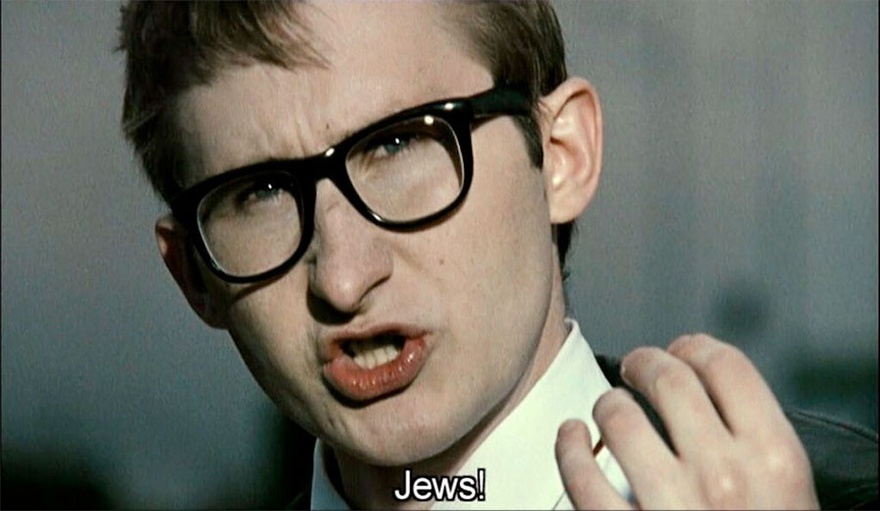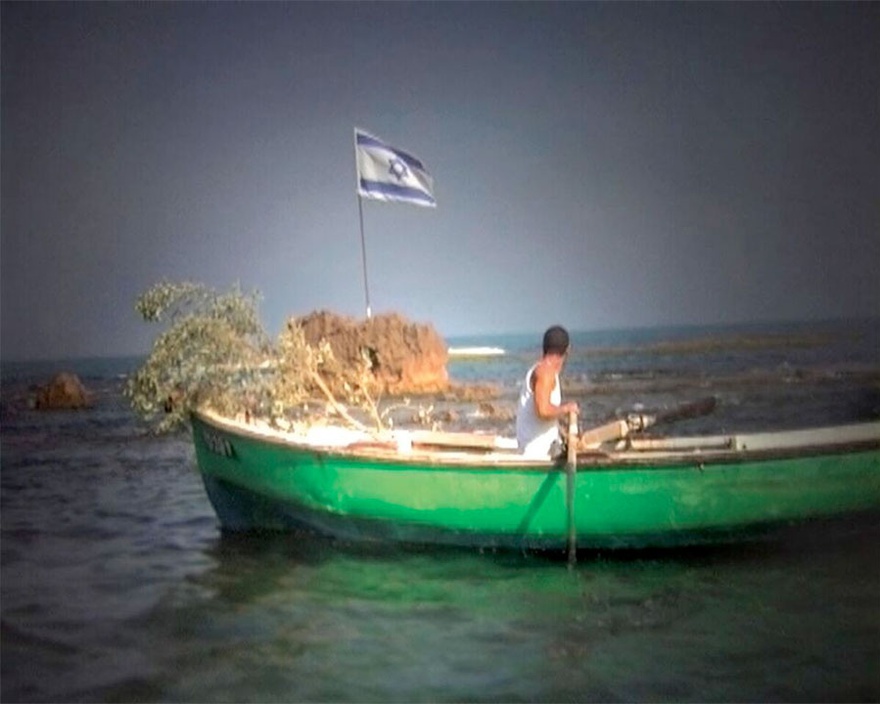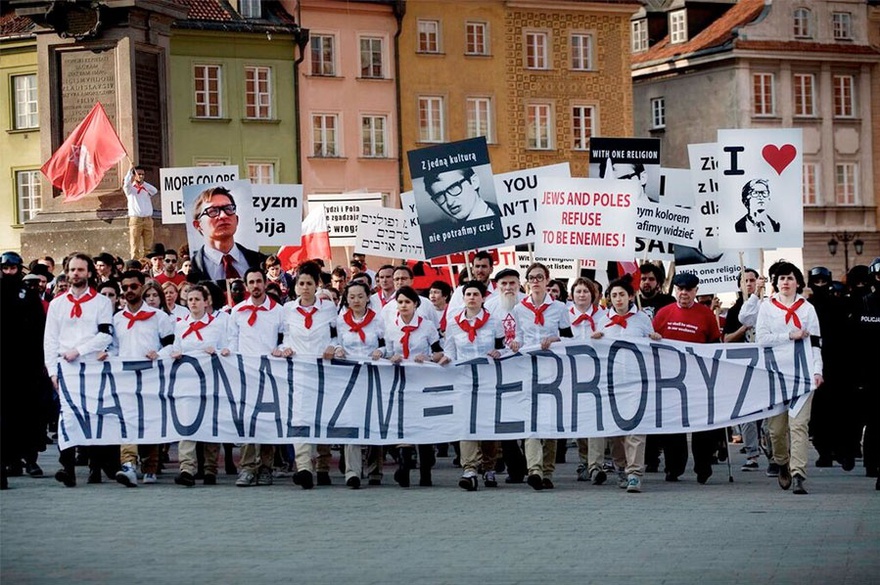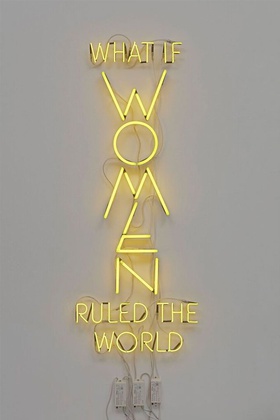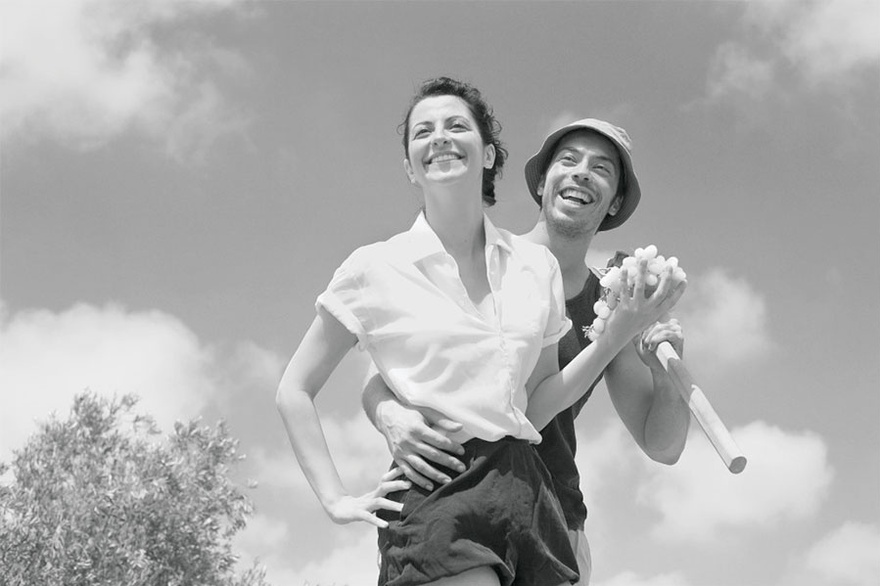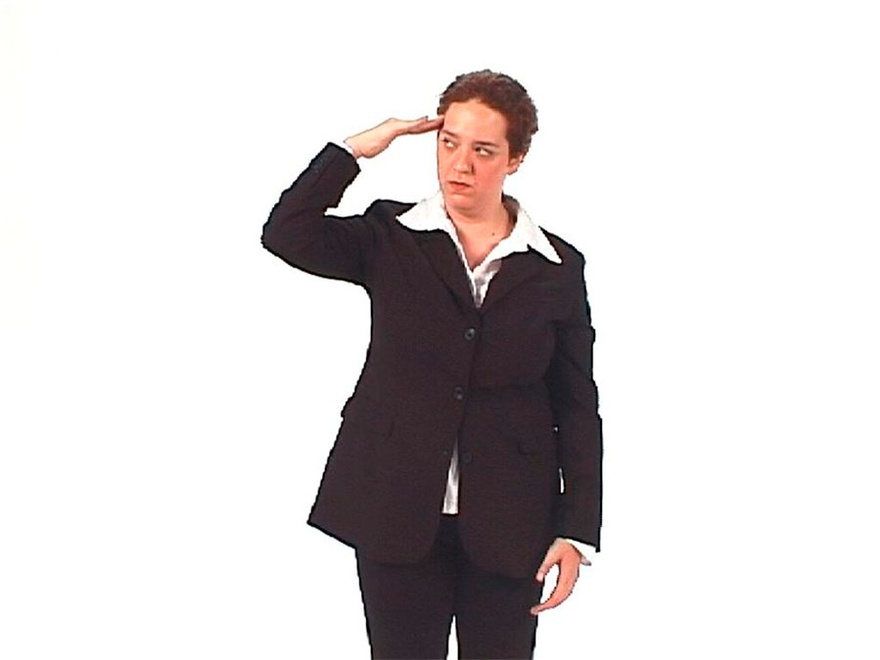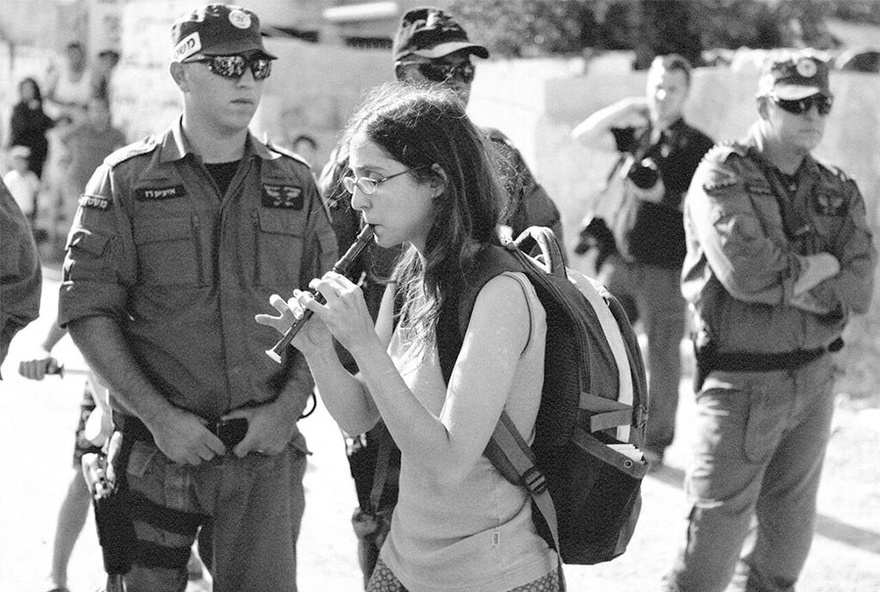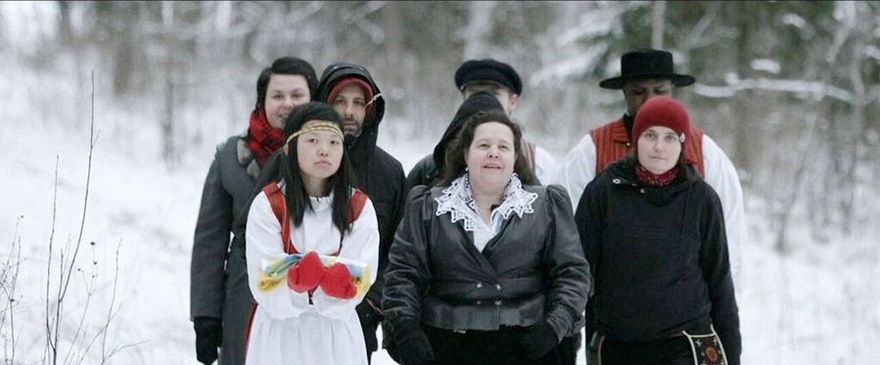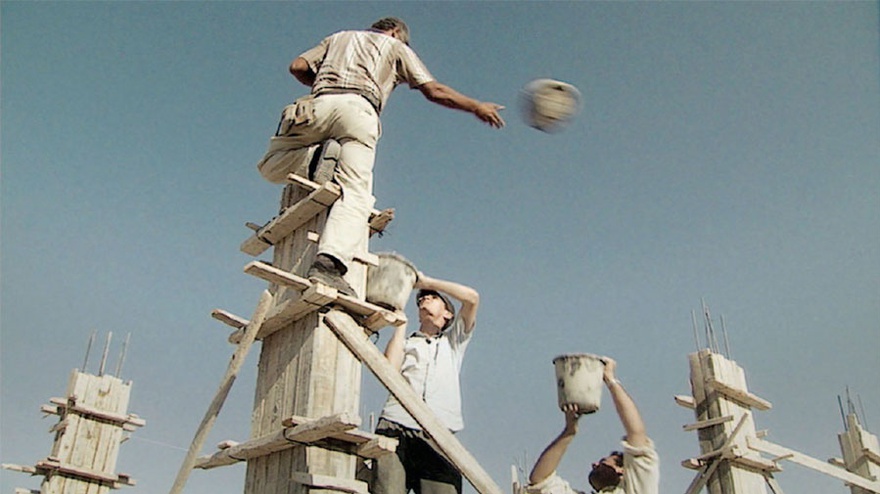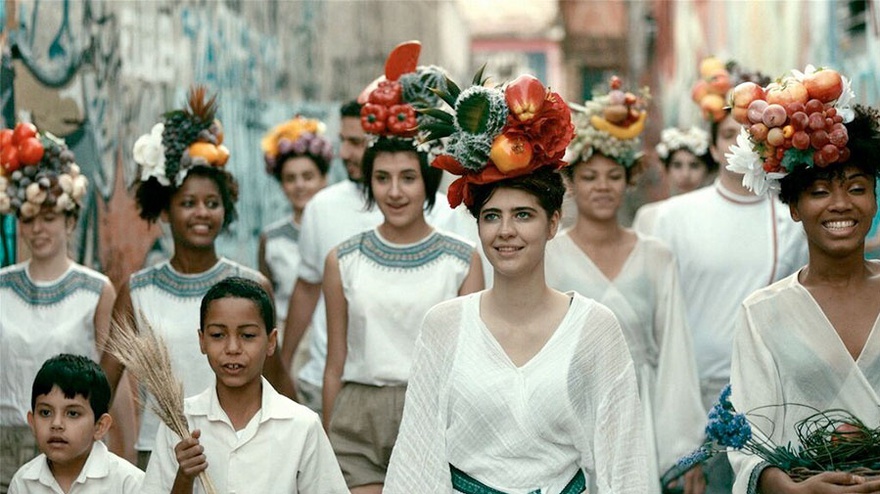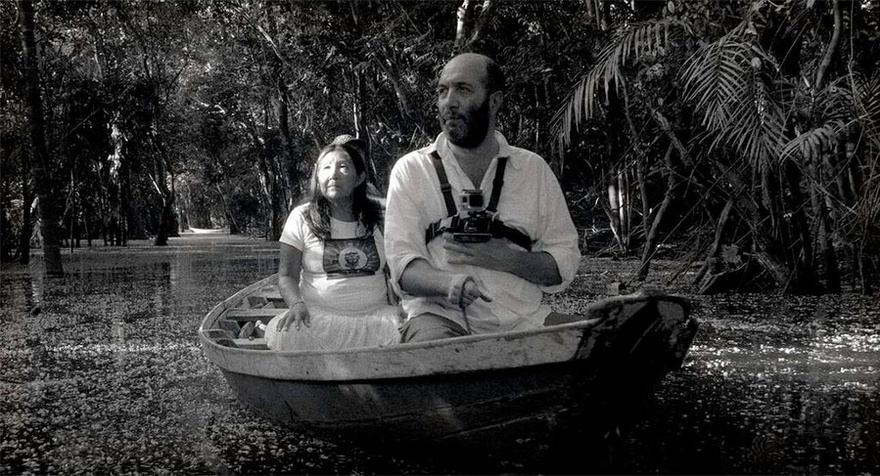Interviews
Reversing Power, Allowing Possibilities
Yael Bartana in conversation with Clelia Coussonnet
How much do political and social norms affect our behaviours and the definition of our priorities? This is a question Yael Bartana tests to the limit as an artist concerned with power relations and the way official narratives and images are constructed and internalized. Unafraid to experiment fully with her ideas, bringing imagination and reality together, Bartana uses video as a means to playfully reveal the mechanisms ensuring the perpetuation of certain forms of control so as to make us conscious of the conditions defining our actions. Earlier works explored Israel and Palestine and senses of national belonging, such as the trilogy And Europe Will Be Stunned (2007–2011), which tackles the birth of The Jewish Renaissance Movement in Poland (JRMiP), from its first discourses that structured the collective organization, to the establishment of a settlement. In this conversation, Bartana considers history and society as the result of a tessellation of narratives, while reflecting on the evolution in her practice towards the exploration of other themes, including the gender binary. She also talks about the impact of politics on the artistic scene and, mostly, counters normativity in public and intimate spheres. As is often the case, she asks more questions than she gives answers, offering reflections that open a critical space for engaged debate.
Clelia Coussonnet: Several of your works probe the aesthetics and mechanisms of the major ideologies of the 20th century – Nazism, Communism and Nationalism, if we approach it as a structuring theoretical framework. What prompted you to explore ideologies and to deconstruct their visual fundamentals?
Yael Bartana: I have to say my practice is currently shifting from these topics. Yet, ten years ago, because I was often working in Israel and Palestine, it was a natural process to observe and analyse national identity, how it translates into public space and how it is informed by the state. I was particularly interested in how state rituals and ceremonies create an identity.
That brought me to the concepts of nation-building and right of return, as embodied in the famous line 'We came to this land to build and built by it/in it' – a Zionist folk song. It underlines the complex aesthetic and ideological foundation of the Zionist transformation of Palestine from a 'hostile' environment into a Jewish space. A different lesson about modernism emerges, where the aesthetics of reaction against realism and against a romantic poetry of object description work to revolving a vision of nature – that of Palestine – ready and appropriate for Jewish national return.
A lot of films were produced in the 1930s to support those visions. The films focused on a single narrative and, as such, excluded the other ones. While looking back, the question today would be: who has the right of return and to where? Of course, Palestinians have no right of return to Palestine. So, my interest grew to understand how systems of meaning and narratives were created around nationhood and how that entails generating a system of inclusion / exclusion. I explored the creation of a dream through images.
CC: And this is how you started hijacking widespread images? For instance, in The Missing Negatives of the Sonnenfeld Collection (2008), you invited Arabs and Arab Jews to re-enact the roles of workers, farmers, pioneers and soldiers from the period between the 1930s and 1950s – figures who formed the backbone of Israeli society's construction during that period.
YB: Absolutely. And, in 2006, I made the short film A Declaration, where a man replaces an Israeli flag with an olive tree on a rock in the sea against the Jaffa port. The plant is a symbol for Palestine, where, for that matter, many trees were destroyed in order to create a better field of vision for the Israeli military.
It is an extremely symbolic element that goes back to sending a message and creating a dream in a very simple way. I am really into reduction and how simple ideas, symbols, can represent ideologies: by 'flipping them on their heads', exchanging them with other symbols or simply adjusting them, I am illuminating and undermining them. This is why I started working with the method of reversing in order to challenge political conditions and discourses.
In 2006, when I started working in Poland on what would later be called The Jewish Renaissance Movement in Poland (JRMiP), I wanted to continue investigating the importance of aesthetics with regards to how ideologies are performed in images. That time I wanted to focus on Europe in relation to the Middle East, on the intersection between past and present, as well as on fiction and reality, socio-political change, anti-Semitism and current xenophobia and migration. This massive project, And Europe Will Be Stunned, started in 2006 and culminated with its presentation at the 2011 Venice Biennale. It finished in 2012, as part of the 7th Berlin Biennale, with the three-days JRMiP Congress in Berlin, which operated as a symbolic parliament aiming to collectively imagine a new future and to formulate the concrete platform and demands of the movement. It debated one of the following questions per day: How should the EU change in order to welcome the Other? How should Poland change within a re-imagined EU? How should Israel change to become part of the Middle East?
My main interest was to trigger discourse. I used the film to allow the participation of different voices and to create a platform. The topics of homeland and sense of belonging also came about. For me, films are starting points to generate debate. I think it was quite effective in the Congress.
CC: You interrogate nation building in a body of work you produced about Israel between 2000 and 2010, which included the videos Trembling Time (2001), Freedom Border (2003) and Wild Seeds (2005). In Trembling Time, you examine state rituals of commemoration, particularly looking at the moment of silence observed during the Soldiers Memorial Day in Israel, while in Freedom Border you follow a military blimp watching over the Israeli border. Retrieving a 'golden age' is a mythical enterprise that many governments set for themselves. How does your practice reflect on such a political agenda?
YB: With these works and with the trilogy, I was trying to look at how memory and history are used by politicians in order to justify certain ideologies. Maybe there is a way to go beyond the nation-state by questioning this. Today, the nation-state is still very strong, and there is even a tendency towards an increase of nationalism. Looking for a 'golden age' is also a form of domination. The condition which governments hold dear comes true, but harmony, peace and stability are a form of illusion as they are always created behind the people's back. It is a way of maintaining an order.
Actually, these days I am very interested in the means to get rid of the father figure. I am reflecting on patriarchy as a form of control and on gender and power relations, and am trying to go beyond the binary of man / woman. Patriarchy is the only language that is familiar for us. And this is still relevant today with regards to the process of decision-making. History is rooted in male-dominated conditions.
CC: Are you developing a new body of work based on these issues?
YB: Yes, my current project is called What If Women Ruled the World? Again, I am trying to undermine and reverse power, allowing possibilities with the hope of expanding notions of gender politics. What if women were in majority, in power? Would they use the same language as men? Would they adopt the same behaviour? Would they make the same decisions? I want to know how different it can be. It is something I do not have answers to.
CC: When you look at political ideologies, you also tackle the utopian desire in these narratives that are based on creating a new society. The dichotomy of the presentation of male and female figures in propaganda images surrounding such ideologies takes us back to the system of inclusion / exclusion you alluded to both in terms of the patriarchy, and in terms of the nation-state.
YB: Yes, it is all connected. What happens in the nation-state has to do with creating a myth, as you said, and with the need to belong to a certain territory. Of course, we need the sense of belonging. I guess it is natural, but it is also a relatively new idea. The origins of the nation-state are disputed, but, according to a few intellectuals, it may have already started in the fifteenth century with political economy, political geography, capitalism and so on. The nineteenth century marked the consecration of the nation-state. It might be very simplifying, but I feel it is also connected to the need for control that most men have.
CC: It is strongly related to power structures.
YB: Exactly. It defines power structures: who has the power and who has access to it? Who has the voice? Who is the decision-maker in the end? These are big questions and I do not have answers; I only want to trigger reflection and to make the impossible possible. I think one needs openness and imagination when experiencing my work. You need to activate yourself and the set of beliefs that you have. For the project What If Women Ruled the World?, for instance, I do not say if it would be better or worse if women ruled the world. I simply want to condition different states of mind, illuminate new thoughts and emotions, expand the gender meaning of women, and have the opportunity to play with ideas.
CC: Your visual language is a combination of reality, documentation and fiction. You have used raw footage that you filmed, with editing, and then you have also moved to a more cinematic treatment of the image with scenarios and performers. In a way, we could say you 'stage reality'. How do you operate this translation from one dimension to the other?
YB: As an artist, my aim is to observe and undermine reality. I react to the things that I experience, see, or learn about, and how they trigger some sort of emotion or influence me. Because my practice is intimately based on reality and history, I am into understanding the possibility of art as a form of changing our mindset. Some works of art could change reality and the way things perform by undermining what we are so used to. For me, making fictions based on reality is a very useful method. I often try to push the fiction to the next level because it helps to study where we are at today.
It also all depends on the context I work in. For example, my ongoing work revolving around gender issues came from looking at Israel and Palestine. The audio piece Simone The Hermetic (2015) was my first step towards questioning gender relations. Simone is a man who miraculously gets pregnant on Temple Mount in Jerusalem and who changes humanity. A few years ago, my starting point was to think how different would it be if women had more power in Israel and Palestine? Would it create different hierarchies or set of priorities? Would it stop the war and the corruption? These are questions I cannot really answer except by creating a fiction or by experimenting with ideas. For that I need to create a platform; I need to build a set that has its own rules. Yet, it is not a theatre play, it is not a film. Every time I work on a new idea, I have to find the proper form and method to analyse the frame that I am setting. I use a cinematic language in terms of visuals to create a powerful experience of images.
CC: In your practice, you have examined the tensions between the individual and the collective experience and 'behaviour pattern' [1], as in the video Tuning (2001) where, while a national anthem is hummed, a woman tries to break her salute but does not succeed. It leads us to wonder if we are free or conditioned through entrenchment in a group dynamic. Do you think this also relates to when we look at gender relations?
YB: I am convinced there is a link. If I think about how I was raised, if I look at my own childhood, gender definitions and roles were very clear. Things have changed with time. For instance, I live with a woman and we have a son: his childhood is certainly very different from mine because he has two mothers. I am interested in investigating the conditions in which we are brought into society. I look at this from my perspective and, visually, I try to develop a certain imagination and experience that are not part of the main narrative.
CC: Education plays a big role with regards to the transmission of gender norms.
YB: Definitely. The way we are educated is crucial. It affects the way you view and analyse the world and even the definition of your priorities. It starts there.
CC: What about generational change? Do you think that there has been one?
YB: Everything has changed for good or for bad; I do not know. Technology has progressed, deeply affecting our lives and, at the same time, we are going backwards. Just look at the news. There are uneven events. In Israel, for instance, censorship is very high. It is becoming more and more difficult to guarantee the rights of expression and speech.
CC: Past ideologies used visible manipulation and propaganda to lead people to conform to an order. What about now? Is there a latent, insidious, coercion? And can art help strengthen civil society? In The Recorder Player of Sheikh Jarrah (2010), for example, you document the protests against eviction of Muslim residents by Jewish settlers from Jerusalem neighbourhoods. A young woman playing music breaks a police cordon.
YB: We are responsible for going against the quality of politics sometimes. For me, it is also the question of what do you do in the name of what. Many wrong things were done in the name of Liberalism or Human Rights, for instance. When one narrative prevails, it excludes other possibilities. In France, it has been obvious with the question of the hijab and secularity. At an artistic level, Creative Time Summit has organized very interesting and meaningful discussions. They have discovered and promoted promising artists and projects, even those criticising the art world, as somehow it has been defeated by liberal ideas.
CC: You exhibit internationally while your works are deeply rooted in the place you record them. Do you think about how to create conditions for encounter with the local audience, so they can be exposed to the work too?
YB: I met a lot of local people in order to make the film True Finn – Tosi suomalainen (2014), which was really about urgent questions: I gathered eight Finnish-residents for seven days to define Finnishness. The video was not shown in that many in art contexts there, but it is a tool for Finnish schools to talk about diversity, for example. It is used in the teaching programme. It is great that it can find resonance within the local context.
As for the trilogy And Europe Will Be Stunned, we made sure it would be screened in small villages around Poland with the help of the movement Krytyka Polityczna.
CC: What were the reactions to it?
YB: We had diverse reactions, ranging from fear towards the project to a good reception of it, as the Polish intelligentsia was looking for such an initiative. I used the film for lectures and Sławomir Sierakowski and I travelled for one year to present it in academic, artistic, cultural and activist contexts.
In Israel, it was also shown in different places. It was projected during the Holocaust Day in schools, as part of the programme. It is a tool to look at history from different viewpoints. It is crucial for me to trigger debate.
CC: What about your videos on Israel and Palestine, like A Declaration or Summer Camp/ Awodah (2007), which follows a group of volunteers rebuilding Palestinian houses in the Occupied Territories? In them, you often explore land dispossession. Have you ever had the experience of working simultaneously with the two communities around the question of territory? Have you shown these works in both spaces?
YB: They were shown in Israel, of course, but Palestinians do not want to show Israeli artists – even an artist like me. It is impossible for me to show my work in Palestine.
When I realized Summer Camp / Awodah in 2006, I worked in East Jerusalem with the local community. It was in the framework of the exhibition Liminal Spaces [2], a project gathering Israeli, Palestinian and European artists to look into the liminal space between Palestine and Israel. For two weeks, I filmed the Israeli Committee Against House Demolitions – the ICAHD, founded by the anthropologist Jeff Halper – reconstructing Palestinian houses. I was interested in building as a form of resistance... or in resisting in the form of a building. I looked at how we can resist a state or an ideology in a very positive way, by constructing something. Normally, resisting is a form of anarchy, tension or destruction.
CC: What role could cultural policies adopt towards tightening the ties between the two communities?
YB: Liminal Spaces was an attempt to do so; this project was trying to go beyond the government and beyond political conditions. It was super difficult. Unfortunately, no matter how open you are, when you are Israeli, you are always the bad one. It is hard to open your mouth, even if we do not forget that we speak from a posture of privilege. We are artists that can do a lot of things.
CC: Because privilege often goes hand in hand with power structures.
YB: It is true that, because of the political conditions, it is harder for people to come and see Palestinian artists' work. The occupation is limiting many things on many levels, even if there are initiatives to promote Palestinian culture like the Qalandiya International exhibitions.
CC: Palestinian artists do not benefit from the same opportunities.
YB: Definitely not. Yet, it is hard for me to speak for Palestinians. I do not want to be representing anyone; this is important because my work raises the question of representation a lot. I do not want to be the one that speaks for others; I can only speak for myself. As an artist, I feel that it is my commitment to talk about what is closer to me.
CC: I would like to address something else. Indeed, I am compelled by your exploration of religion and mysticism, and the way you delve into beliefs of salvation. You look at this both from a collective point of view, in your video Inferno (2013), revolving around the construction of the third Temple of Solomon in São Paulo by a Brazilian Neo-Pentecostal Church, or from the perspective on an individual quest, such as when you follow your friend Michael on his Ayahuasca ritual journey in the Amazon in PARDES (Orchard) (2014). Could you tell me more about it?
YB: Inferno was connected to questions of nation-state and territory. For me, the fact that a Brazilian bishop tries to build a 'new Jerusalem' through erecting a temple based on Solomon's Temple is linked to the history of the temple in Israel and to the DNA of 2000 years of Jewish history, including the idea of the diaspora's return to homeland. It also made me think of the fanatic group of Jews that are trying to promote the idea of creating a third temple on the site of the Al-Aqsa Mosque. At the same time, I was intrigued about how the Neo-Pentecostal Church uses the Jewish narrative and theology in order to address redemption. Their beliefs are very much influenced by old biblical references they adapt and borrow from. So I decided to explore myths and narrative-making, expanding the question of who is a Jew. Inferno is like an imaginary space. Again, it is a very symbolic experience. The way it is filmed makes it look like a sci-fi place of admiration and practice of religion. One of my starting points was the idea that the construction of the temple already involves its destruction, as an eternal loop. It points to how utopia and dystopia come together and it talks about the apocalypse, death, mourning, loss, grief and pain. Inferno is quite open really, it delves into how stories are told and constructed, and it links to my experience of growing up in a situation of war.
CC: The cycles of architectural construction and destruction are often motivated by celebrating a determined heritage while eradicating other memories; these tensions get inscribed in architecture, as shown in your collaborative piece Short Memory (2004), which presents footage from the Negev Brigade Memorial to soldiers who fell during the 1948 Arab-Israeli war. How much are we affected by this heritage?
YB: Many of my works are indeed reacting to and challenging the meaning of heritage. Growing up in a Zionist family, my parents put a lot of effort to introduce and educate me to the history of Israel, especially through sightseeing. As a child, I knew almost every stone and its story. I used to love those excursions. But, later on, when I was a student in Jerusalem Art Academy's photography department, I realized that some of the stones I knew had more than one narrative. I started to be doubtful; I wanted to find the truth. But then, what is the truth? Is the truth in the eye of the observer? And what is beyond the truth?
Art became my tool to unfold, explore and challenge the propagated histories and the notions of heritage and memory. The Zionist movement was driven by the search for a homeland for the stateless and persecuted Jewish people. Yet, it trampled over the rights of Palestinians. I became interested specifically in the use of the tragedy of the holocaust in relation to the right parties' politics in Israel.
CC: What about PARDES (Orchard)?
YB: This is a very personal film about trust, about wanting to experience enlightenment and delving into the Being. I did not take the drug my friend took, so I was curious to see what it looked like to witness someone's transformation.
Yael Bartana (1970, Kfar-Yehezkel, Israel) is a video artist who explores the imagery of cultural identity and the politics of memory. In her photographs, films and installations, her starting point is the national consciousness propagated by her native country, Israel. Bartana investigates the ceremonies, public rituals and social diversions that are intended to reaffirm the collective identity of the nation state. In her Israeli projects, Bartana dealt with the impact of war, military rituals and a sense of threat on every-day life. In her recent work, the artist has been experimenting and expanding her work within the cinematic world, staging situations and introducing fictive moments into real existing narratives. In 2011, Yael Bartana represented Poland in the 54th edition of the Venice Biennale.
[1] From the exhibition catalogue Yael Bartana, Kunstverein Hamburg, Hatje Cantz, 2007, p. 49.
[2] The Liminal Spaces project was created by the Artists Without Walls group. It consisted in an eight-month project with seminars, conferences, field trips and exhibitions, finding their roots in 2004 and spanning until 2007. It was curated by Galit Eilat, Reem Fadda and Philipp Misselwitz.

